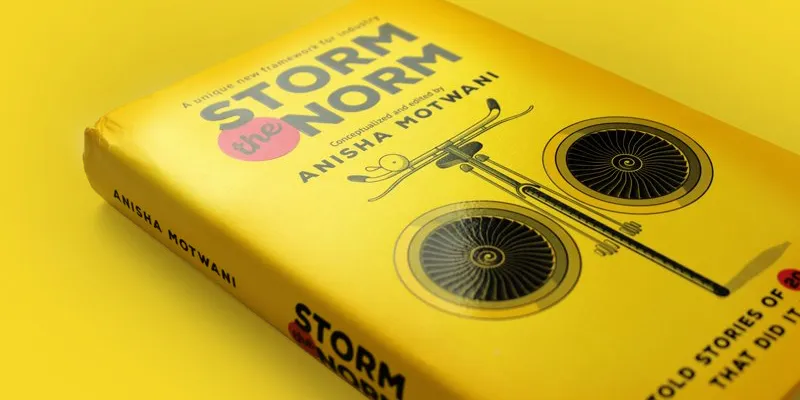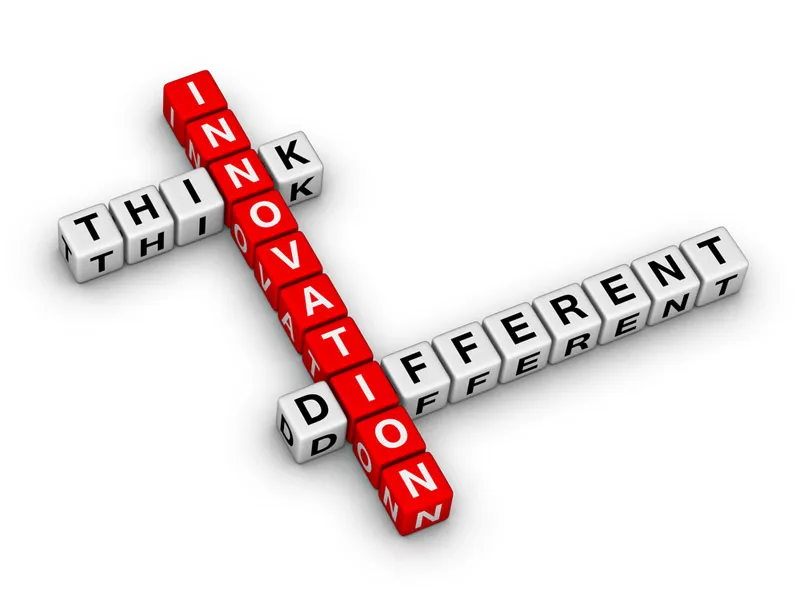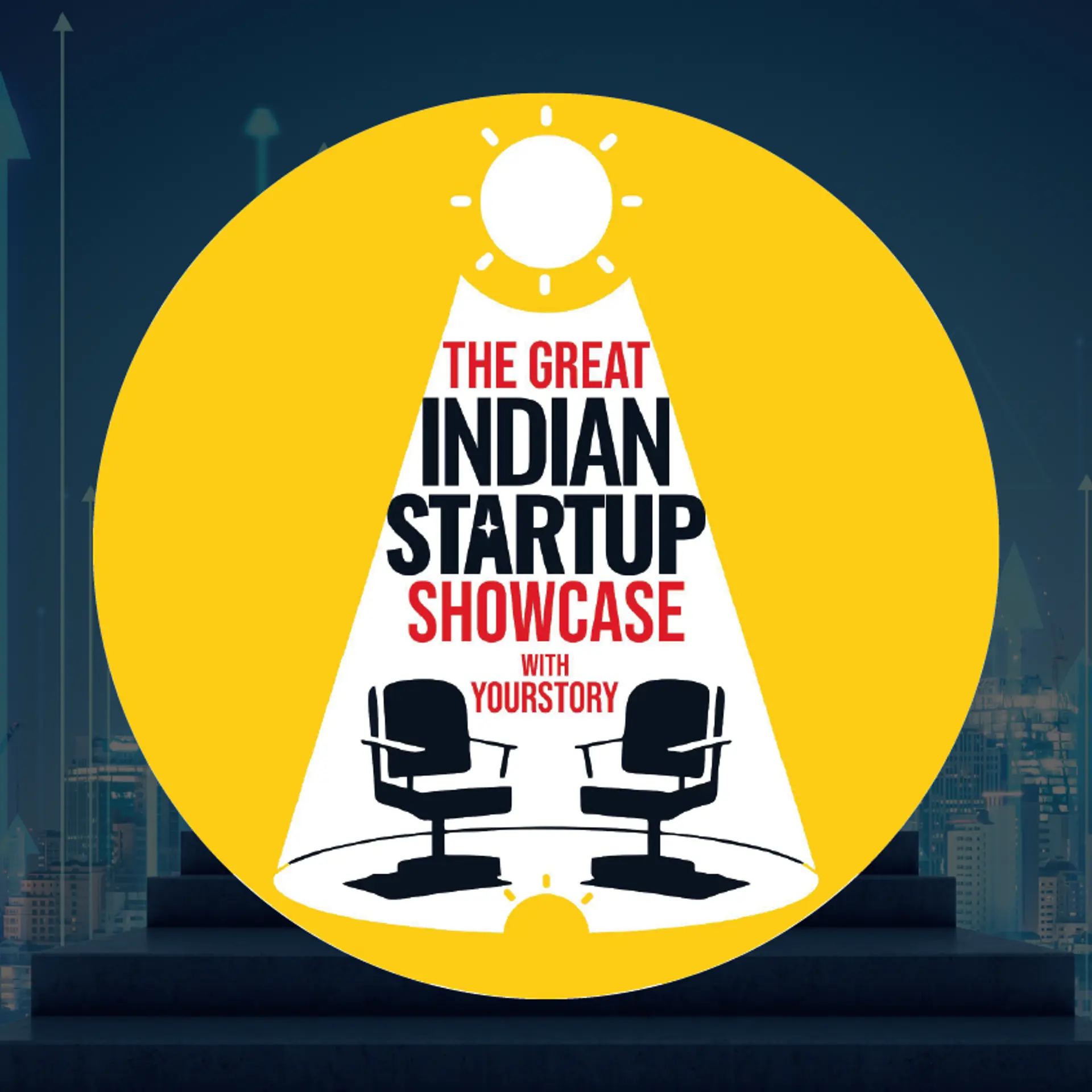5 tips and 20 case studies for thinking different and creating market value
“Market norms are stormed either by irreverent new entrants or by gutsy incumbents who have seen an opportunity they can’t unsee,” says Anisha Motwani in her book ‘Storm the Norm: A Unique New Framework for Industry’.

Anisha is a business strategist and columnist, and has been in Impact’s list of Top 50 Women in Media, Advertising and Marketing. Her articles have also appeared in MarketBuzzar.com.
The 284-page book provides 20 case studies of Indian companies from sectors such as telco, foods, automobiles, personal care, financial services, media, entertainment and travel. They are classified into three categories: Entrepreneur (MakeMyTrip, PVR), Challenger (Axis Bank, Sensodyne, Idea), and Legacy (MTR, Kissan, Saffola).
Entrepreneurial companies create new categories; challengers take on their sector leaders; and established innovators continually reinvent and redefine themselves. The book is a good blend of recent business history in India along with innovation tips and checklists. (See also my book reviews of 8 Steps to Innovation, A Never Before World and Dream With Your Eyes Open.)
The five steps to storming the norm are explained by Anisha and innovation consultant Ranjan Malik, as summarised below.
- Look for stale markets and norms
Stale markets are those that have not changed in years, and have commoditised offerings with thin margins. The market players are risk averse, and customers experience high levels of dissatisfaction or resignation to a sub-optimal fate (eg. many cinema halls in India till the 1990s).
- Spot the hidden suboptimal
Look at local and external trends, and spot ways of changing the norm, filling gaps, and delivering new experiences (eg. rise of the multiplex format by PVR). The end-result seems almost obvious in hindsight, but the innovator sees it and acts on it first.
- Conceive and iterate the breakthrough
Come up with a number of ideas but act on the most feasible and viable one (eg. better technology in the case of multiplexes; bundled cinema, food and shopping). Rapid prototyping and multiple iterations will be needed to evolve the correct model.
- Hit critical mass and scale rapidly
Once critical mass has been reached, you must ‘create the storm’ and explore larger synergies and economies of scale. For example, the rise in cinema tickets surplus has spurred new genres of movies, which feeds back into bigger audiences. “Lazy incumbents love failed upstarts. They reinforce their long-held view that nothing is possible beyond what they have been doing for years,” says Anisha.
- Move beyond the fresh norm
“The fresh norm is after all a norm,” cautions Anisha. Norms are the lull before the next storm, and the innovator must out-pace rising customer expectations and beat the new competitors (eg. the Internet and mobiles are disrupting the movie watching experience). Unrelenting innovation is the key to long-term success.
As another example, in the late 2000s, the insurance industry in India was a stale market. Max Life spotted the sub-optimal (mistrust of agents), and created a culture of trust and honesty right from the inside. It focused on long-term savings, and eventually become a market leader. But this norm itself could be disrupted by the Internet and online marketplaces.
For an innovation ecosystem to take off in an upward spiral, there must be willingness among consumers to pay and producers to invest – but it takes a sharp and persistent innovator to jumpstart the process. The innovation can be in the form of a product, service, ecosystem architecture or business model (see also my book review of The 10 Types of Innovation).
Case studies and insights
Success metrics for innovation among the 20 case study companies vary widely. “Growth, share, behaviour change, external recognition, consumer take-up rate are just a few ways different brands have expressed their accomplishments,” says Manisha. Some highlights and takeaways from these success stories are briefly summarised below.

Image: shutterstock
For example, Deep Kalra was at GE Capital when he decided to ride the Internet boom of the late 1990s and started MakeMyTrip. He focussed early on the NRI market, and then rode the domestic wave with the rise of new airlines and online payment channels. Technology was powered by Amadeus, and then new infrastructure was added to handle domestic ticket booking. MakeMyTrip listed on NASDAQ in 2010, and branched out into international tour bookings and domestic bus ticketing.
Idea Cellular came into a crowded market, but leveraged the power of creative storytelling to build good brand conversations (‘an idea can change your life’). It created an egalitarian work culture, and pushed a deep rural direct distribution model. It pitched itself as ‘society’s problem solver’ in health, environmental protection and democratic rights – but in an entertaining way, thus riding the social, cultural and political components of a brand.
Mavalli Tiffin Room (MTR) in Bengaluru reinvented its business from a local restaurant to a branded high-quality FMCG company. It innovated with machinery for making masalas, but stayed true to its promise of quality and taste. RTE products and mixes were rolled out in a multi-local model of operation for different regions and tastes, and a Centre of Excellence for Indian Cuisine was created. The brand promise includes cutting down on kitchen drudgery for the housewife, while still ensuring her pleasure of delighting the family with authentic Indian food; this has expanded to NRI communities and other professionals.
PVR CMD Ajay Bijli was inspired by the US cinema experience during a visit in 1990, and brought some of those technology and experience innovations to India. It also produced movies like ‘Taare Zameen Par’, and promoted independent films such as the crowdfunded ‘Lucia’ (in Kannada). It has expanded into bowling with a joint-venture from Thailand, and tied up with partners from Mauritius to Mexico.
India was a very late entrant into commercial FM radio, with AIR as the sole broadcaster for decades. Radio Mirchi helped create radio as a ‘cool’ medium and RJs as aspirational, and blended Bollywood programming with audience research. It expanded to 10 Indian languages in 2014, and launched overseas in UAE.
Dabur was seen as largely an ayurvedic product company, but branched out into packaged juices with the Real brand. Tetrapak was used to launch new packaging, along with advances in warehouse management. The ‘two-minute noodles’ generation was sensed as ready for packaged juices, and the fruit-veggie combination was targeted for health-conscious adults. Fruit shakes, yogurt, summer coolers and ethnic drinks were other variations.
Sensodyne moved beyond the basic-benefit toothpaste segment with its medically-validated product. Education about tooth sensitivity was a major part of its early marketing, along with a dentist outreach programme; it eventually became the No.1 brand retailed by chemists.
Marico’s Saffola began by pitching its blended cooking oil as healthy for the heart, and then moved ‘from the kitchen shelf to the breakfast table’ with cereals such as Saffola Oats and Masala Oats. It came up with innovative health promotion campaigns during events like World Heart Day.
In the 1990s, loose tea dominated the tea market, till Tata Tea realised that its ownership of tea gardens could be converted into a ‘garden fresh’ brand promise. Japanese technology was used to package tea into packets right at the source, and in the next wave a diverse set of blends was created. Tata Tea also acquired UK brand Tetley, and launched the Agni brand in the economy segment. It cleverly dovetailed the waking ritual associated with tea into the ‘Jaago Re’ campaign for social change, eg. for voter elections.
UTI bank re-christened itself as Axis Bank, and pitched itself as a young and progressive bank for a new generation of Indians who wanted ‘progress without a pause’. Its features include pan-service loyalty rewards and design-led flagship lounges.
Mahindra launched the XUV500 as an affordable SUV for the value-conscious Indian. The cheetah was used as a design metaphor, and social media was used right from the pre-launch stages as a storytelling and experience-sharing platform. The brand promise was: ‘May your life be full of stories’.
Honda started off with a joint venture in India and then branched out independently, with ‘The Power of Dreams’ mission. It rejuvenated the ‘dead segment’ of automatic scooters with the Activa brand, pitched not just for families but youth and professionals. Its high-value high-mileage motorcycle brands Unicorn, Shine and Stunner followed suit with the ‘Communicate, Connect and Create for India’ strategy. Honda now plans to make India a major export hub.
Ford built upon the impact of its Ikon and Figo models to promote its Eco Sport SUV (earlier developed in South America). Its Urban Discoveries roadshow promoted user generated multimedia content.
Pepsico’s Kurkure blends form with message in its ‘twist on tradition’ formula, with its pitch as ‘familiar taste in an innovative format.’ It modernised the codes of local namkeens with Westernised ‘potato chip’ packaging. It humorously portrayed the Indian family as ‘playfully imperfect,’ with a wide range of flavours for all personalities (puffed, hybrid, international).
Kissan was seen as a basic jam, ketchup and juice company, but took on more inspiring branding (eg. ‘plant tomato seeds’ for kids to appreciate purity of tomatoes) and advisory communication (eg. tiffin roll recipes). Sprite differentiated itself from other aerated drinks with themes of clarity and purity, and identification with sports and youth. It divided its brand promise into consumer needs (functional, identity, emotive), social values, symbols and features.

Image: shutterstock
Other examples in the book include ITC (converting shower gel into a soap bar format), Cadbury (moving from early perception of self-indulgent ‘foreign treat’ to a ritualistic shared-happiness meetha), Raymond (customised suiting for the holistic ‘Raymond Man’), and Times of India (city supplements, bundling for advertisers and consumers, focus on youth segment, online UGC, activist campaigns such as Teach India, Aman ki Asha, Mission Mumbai).
Many of the brands cited above have used digital platforms in a major way, eg. Axis Bank (ItsAllAboutMoney.com blog, ProgressTogether.in social media connect), MTR (Dishcovery.in recipe-sharing platform), Kissan (KissanPur.co.in tomato growing campaign), MakeMyTrip (apps), Times of India (Alive app) and Ford (EcoSportDiscoveries.co.in for customer stories).
Several brands tapped cross-industry innovation methods to build ‘fusion’ products (Kurkure, Real), but some changed only the messaging and not the core product (Cadbury). Broader trends harnessed include the youth boom, consumer confidence, global awareness, and concern about healthy lifestyles (see also my book review of Trend-driven Innovation). Numerous other patterns and insights can be unearthed by deeper analysis of the individual case studies, which will be useful for startups and corporate innovators alike.







